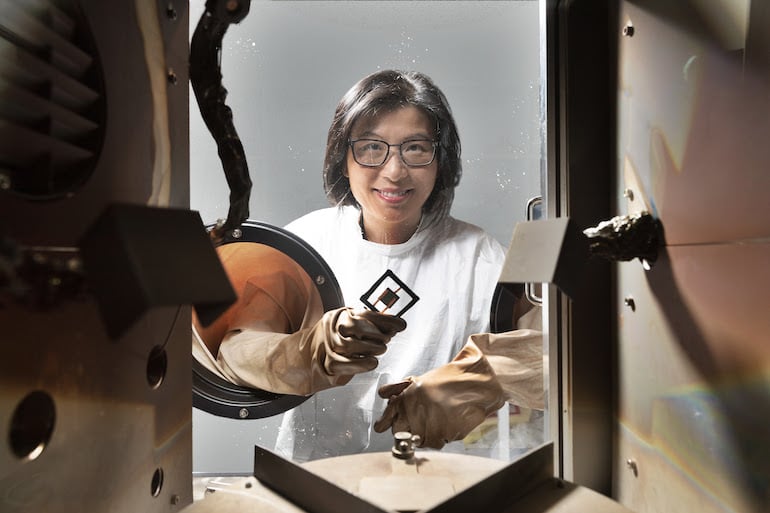A University of Sydney Professor developing cutting edge solar technology has received $2.78 million in research funding from the Australian Renewable Energy Agency (ARENA) to commercial the idea in a partnership with Sydney startup SunDrive.
Professor Ho-Baillie, the John Hooke Chair of Nanoscience at the university’s the School of Physics and Sydney Nano Hub, is joining forces with Sydney-based SunDrive to commercialise advanced solar tech using perovskite-silicon cells.
The research project led by Prof. Ho-Baillie, in collaboration with SunDrive, will improve the commercial viability of perovskite-silicon tandem solar cells.
While silicon is the semiconductor material used currently, perovskites – crystal structures made from mineral compounds – have emerged as a promising alternative, with the efficiencies of perovskite solar cells already approaching the silicon version
This project will focus on stacking perovskite on top of silicon to form a tandem solar cell, rather than using silicon on its own.
Ho-Baillie said idea of this stacking is to convert more energy from the sun to electrical power.
“The efficiency that can be achieved by a perovskite-silicon tandem in a laboratory is now over 30%, while the highest efficiency for a silicon cell on its own is just below 27% in the laboratory and around 23% commercially,” she said.
“There isn’t much room for silicon to improve because its theoretical limit is only 30% – but for perovskite-silicon tandem, it is 40%.”
The cell design is the “future” of solar technology, Ho-Baillie said, however more work on the concept is needed.
“To make them the main commercial option, we need to improve the durability of these cells – especially under the combination of thermal and light stress,” she said.
“We also need to develop industry-relevant manufacturing processes that are cost-effective.
“Lastly, we need to develop technologies of encapsulating and packaging the tandem cells to larger solar panels. These panels, not just the cells themselves, also have to be durable and highly efficient.”
Other investigators on the project include Professor David McKenzie, Dr Jianghui Zheng and Dr Arafat Mahmud, from University of Sydney, and SunDrive cofounders Vince Allen and David Hu and Prof. Alison Lennon.
Professor Ho-Baillie also leads the University of Sydney’s node of the Australian Centre for Advanced Photovoltaics, which recently had its operations extended with $45 million in funding from ARENA for solar PV research to 2030.
SunDrive, founded in 2015, raised $21 million in a Series B in October last year. The company was cofounded by uni mates Vince Allen and David Hu after Allen developed the idea of using copper as a cheaper alternative to silver in rooftop solar panels while studying for a PhD.
The new cells could be up to 30% cheaper than current panels. The solar PV industry already uses around 10% of the world’s silver, and 20% of total industrial demand. Copper is nearly 100 times cheaper than silver and far more abundant.
SunDrive’s backers include the CSIRO’s VC fund Main Sequence Ventures, the federal government’s Clean Energy Finance Corporation, Atlassian founder Mike Cannon-Brookes, Blackbird, Canva founder Cameron Adams, former PM Malcolm Turnbull and Tesla chair Robyn Denholm.
The company has been successful in progressing from lab-scale proof-of-concept to commercial, full-size solar panel fabrication and is one of the only two companies in the world which has demonstrated full-area commercial-size cells with a certified efficiency above 26%.
Allen, SunDrive’s CEO, said they were looking forward to working with Professor Ho-Baillie and her team.
“It’s exciting that ARENA is supporting this project with the goal of accelerating the development of more progressive solar technologies such as perovskite silicon tandems,” he said .
ARENA CEO Darren Miller said the funding goes to leading universities and researchers in solar PV.
“Australia’s solar researchers have helped to make solar PV the cheapest form of energy in history, but to create a future in which Australian solar energy supplies the world with clean power, fuels and products, we need to be ambitious and drive the cost of solar even lower,” he said.




















Trending
Daily startup news and insights, delivered to your inbox.